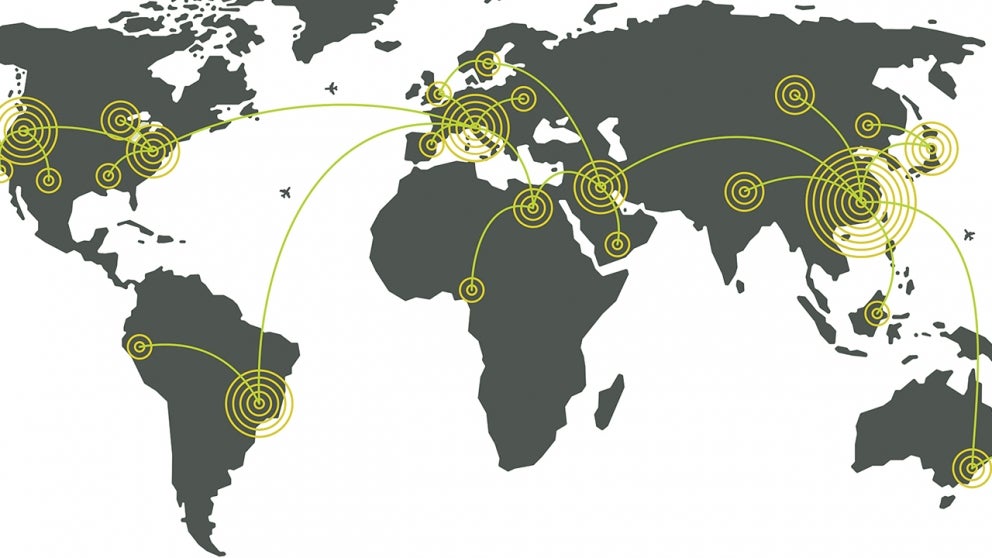
New COVID-19 Model Reveals Need for Better Travel Restriction Implementation

More strategic and coordinated travel restrictions could have reduced the spread of COVID-19 in the early stages of the pandemic, data confirms. The conclusion stems from new modeling conducted by a multidisciplinary team of scientists and engineers at Rensselaer.
The researchers evaluated the distance between countries in terms of air travel, a more complex measurement than simply mapping physical distance. For instance, while China and Thailand may be geographically more proximate to one another, if there are significantly more flights between China and the United States, the chance of disease spread may be higher.
“This is considered a global problem,” says Mamadou Diagne, assistant professor of mechanical, aerospace, and nuclear engineering. “We wanted to know if coordinated action could be taken to mitigate contamination rates all across the world.”
By mapping and analyzing the global mobility network through air traffic patterns, the researchers were able to determine the level of connection between various nations and develop a model that can predict which countries are closer to one another in terms of disease spread. The model was able to successfully predict when the virus arrived in the United States.
Using this approach, the team examined the effectiveness of various travel restrictions countries implemented in an effort to slow the transmission of the virus that causes COVID-19.
“For example, we found that the Chinese lockdown reduced the arrival time of the virus in uninfected countries by about 11 days,” says Jianxi Gao, assistant professor of computer science. “It reduced the number of infections by one million globally.”
Travel restrictions enacted by other nations also helped to reduce global spread. However, the team found that these actions could have been significantly more effective if countries had worked together.
“According to the data we collected, about 50% of travel restrictions were ineffective,” says Lu Zhong, postdoctoral researcher in the Department of Mechanical, Aerospace, and Nuclear Engineering. “Because the travel restrictions were done in an uncoordinated way, they failed to contribute to the global good.”















